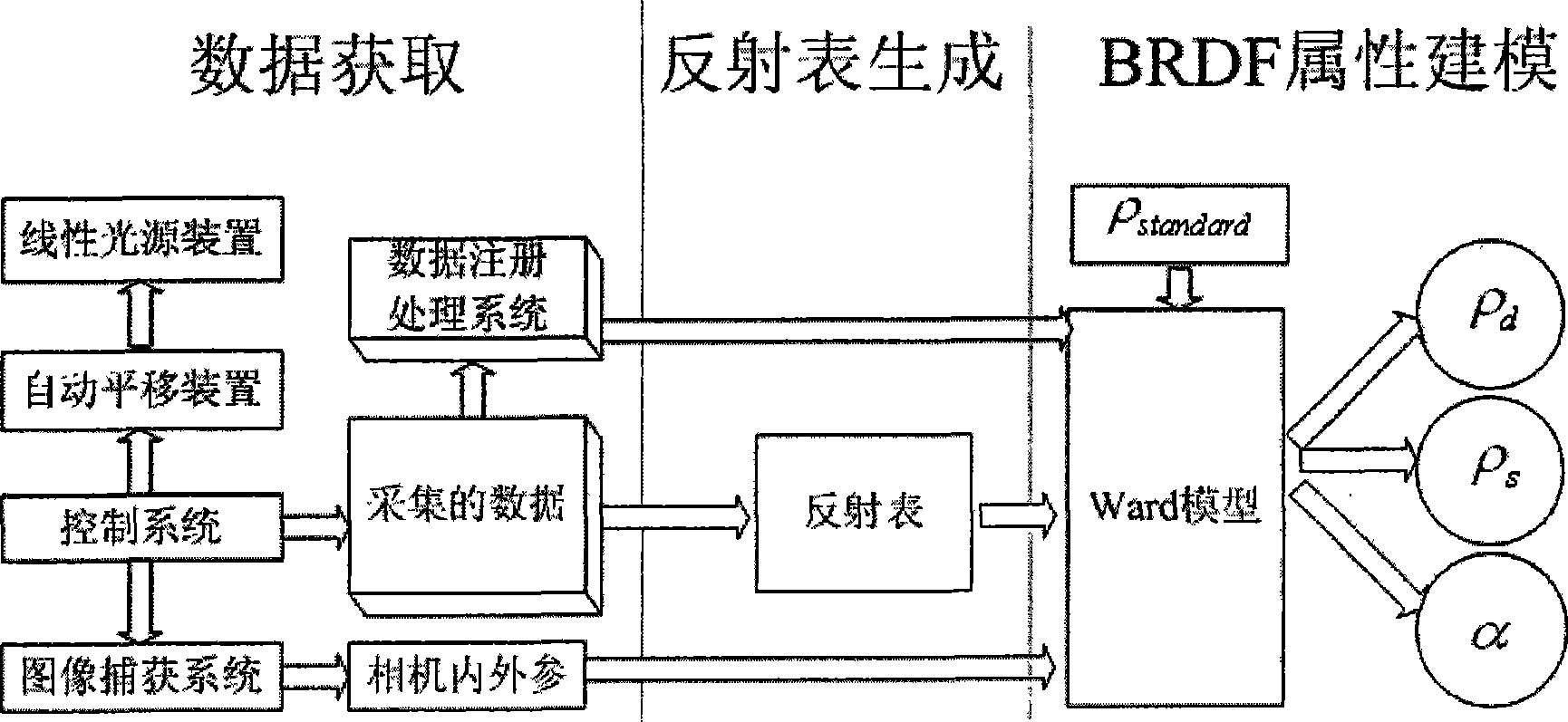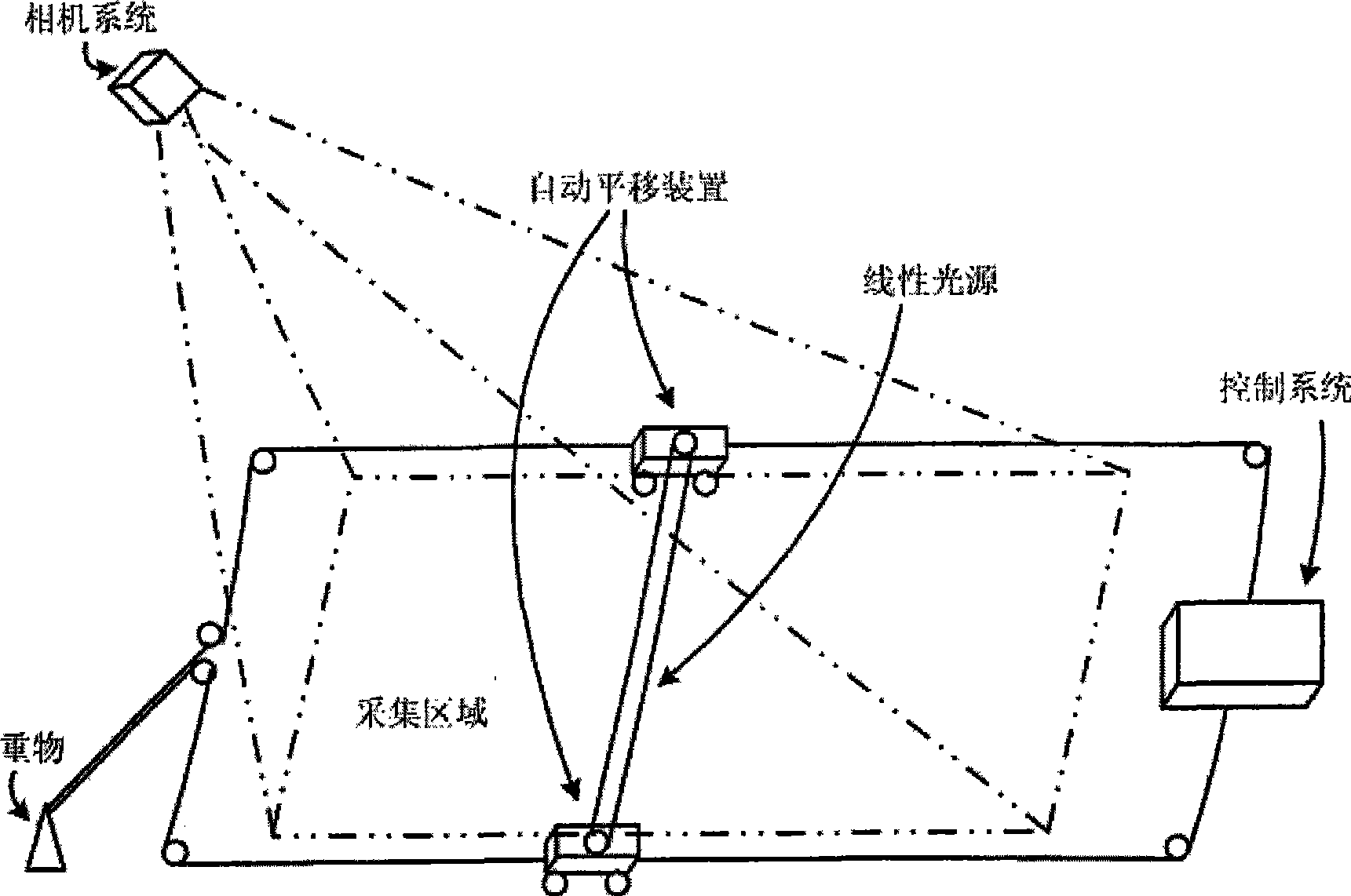True object material quality reflecting attribute modeling approach based on linear light
A linear light source, attribute modeling technology, applied in the processing of 3D images, image data processing, instruments, etc., can solve the problems of complex modeling and so on
- Summary
- Abstract
- Description
- Claims
- Application Information
AI Technical Summary
Problems solved by technology
Method used
Image
Examples
Embodiment Construction
[0044] The invention mainly aims at the BRDF modeling of the material reflection property of the flat real object surface.
[0045] Such as figure 1 As shown, the specific implementation process of the present invention includes three main steps: data collection and processing, BRDF modeling and GPU real-time rendering.
[0046] Step 1: Data collection and processing
[0047] The data acquisition and processing steps are the basis for subsequent steps, including the following stages:
[0048] (1) Construction of data acquisition equipment
[0049] Such as figure 2 As shown, the acquisition equipment used in the present invention is a linear light source data acquisition equipment. The linear light source device is a halogen tube lamp for car decoration, 50 cm long and 2 cm in diameter, wrapped with black non-reflective tape, so that one side of the light source becomes a linear light source with a length of 50 cm and a width of about 3 mm to ensure the width Can be narro...
PUM
 Login to View More
Login to View More Abstract
Description
Claims
Application Information
 Login to View More
Login to View More - R&D
- Intellectual Property
- Life Sciences
- Materials
- Tech Scout
- Unparalleled Data Quality
- Higher Quality Content
- 60% Fewer Hallucinations
Browse by: Latest US Patents, China's latest patents, Technical Efficacy Thesaurus, Application Domain, Technology Topic, Popular Technical Reports.
© 2025 PatSnap. All rights reserved.Legal|Privacy policy|Modern Slavery Act Transparency Statement|Sitemap|About US| Contact US: help@patsnap.com



